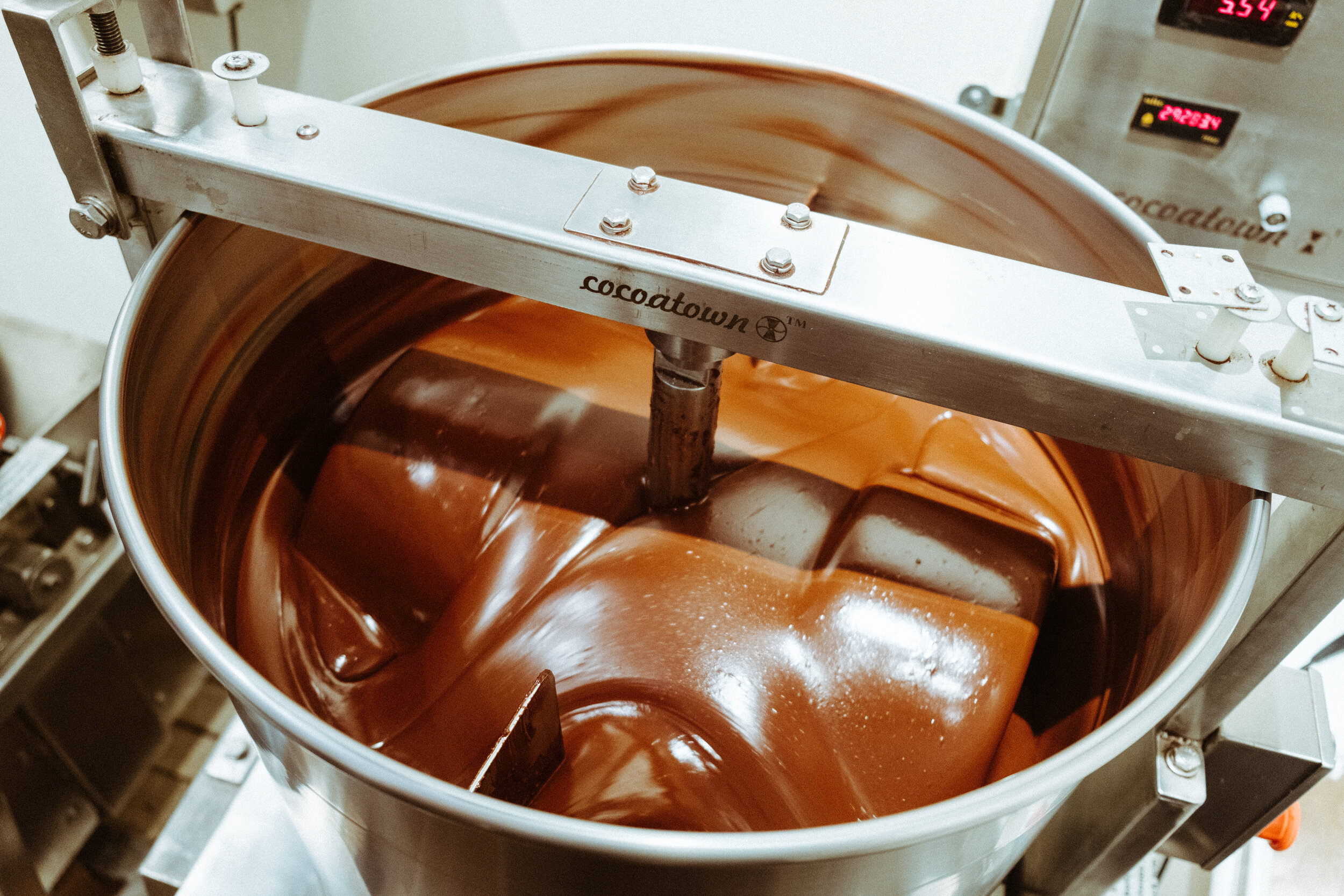Story by Corinne Kocher
Shared Plates
Matthew Raiford encapsulates his wide-ranging background by calling himself a "chefarmer", a mashup of the two different hats he wears.
Raiford is a farmer at Gilliard Farms, a multi-generational family farm he runs with his sister Althea. Having participated in the Georgia Organics conference since 2010, Raiford has used his background as a chef to serve as the chef coordinator for Jekyll Island's Farmers Dinner, work with the farm-to-school team, and serve as a member of the Georgia Organics board.
Chefarmer Matthew Raiford of Brunswick is a farmer at Gilliard Farms and a member of the Georgia Organics Board of Directors.
This year, Chefarmer Raiford helped shape the 2020 Georgia Organics conference "Black Farmer Prosperity" track through conversations with Georgia Organics staff with funding for Chefarmer Raiford helped shape the 2020 Georgia Organics conference Black Farmer Prosperity Track with a committed group of farmers and Georgia Organics staff along with funding for the track being provided by Southern SARE (Sustainable Agriculture Research & Education), which was championed by Brennan Washington, Southeastern Outreach Coordinator and 1890 Land Grant Liaison for Southern SARE.
"We were asking, 'how do we create a track that is about honoring - the ancestors, the people currently farming, and the folks who aren't even here yet?'" says Raiford.
Raiford will be speaking as part of the Black Farmer Prosperity track, in a session titled "Collards Aren't the New Kale". Raiford and his partner, Jovan Sage, will discuss African foodways in Southern Cuisine, and how to "authentically market your traditional crops, and stand your ground in the face of market and cultural pressures to change who you are and where you are from.”
Rodney Brooks, USDA Farm Service Agency Beginning Farmer and Rancher Coordinator, will also be speaking as part of the Black Farmer Prosperity track. With an extensive background as a Farm Loan Officer, he is based in SW Georgia but has been addressing beginner farmer and rancher issues around the entire state since 2016.
At the conference, Brooks will primarily focus on the FSA's Direct Loan program, which lends funds directly to farmers and ranchers, as well as the FSA's Guaranteed Loan program.
"At FSA, we consider ourselves to be the 'Lender of First Opportunity'," says Brooks. "If a farmer or rancher’s financial position isn’t good enough to secure credit from conventional sources, we’re here to give them a start.”
Having been a lender for over a decade, Brooks will be a helpful resource at the 2020 Georgia Organics Conference. "I can answer questions with clarity using my knowledge of our handbooks and regulations as well as my firsthand experience," he adds.
When speaking about the Black Farmer Prosperity track, Raiford emphasizes the key word: prosperity. "I don't think that, on a bigger scale, we've ever had a conversation about the idea of prosperity at the conference," he says. "It's time.”
Conference-goers are going to walk away from this track with a new thought process on what prosperity really means, says Raiford. "It's about abundance - that we should be making money, not just working within the margins," he adds.
Brooks sees funding as fundamentally tied to the idea of "prosperity", because it allows a farmer or rancher to enter the business world and turn a profit. "Profitability leads to increased equity and wealth building, and, in turn, prosperity," he says.
"Prosperity is important build a family legacy or even maintain a family legacy. Family farmers make up the majority of farmers in this country," adds Brooks, "and we want to make sure they’re still around for generations to come".
Raiford, too, looks at prosperity in the long term, rather than how much money is in your wallet. "Prosperity is building up the fertility in healthy soil, creating nutrient dense food, and feeding our families with a kitchen garden - and then have such an abundance that we can sell," he says. "At that point, you're really prosperous".
To Raiford, the conversation can lead to a different mindset on what prosperity actually looks like, with an emphasis on network and community.
"It's what Georgia Organics has become - a collective of farmers, of all kinds of backgrounds, coming together and trying to figure out how to make this thing work". To Raiford, "this is how I see prosperity happen".
Need to Know:
The full Black Farmer Prosperity Track is as follows:
Session I: Funding your Farm: Understanding FSA Loans, Community Banking, and Non-Traditional Options
(with Rodney Brooks, USDA Farm Service Agency Beginning Farmer and Rancher Coordinator; Donna Nuccio, The Reinvestment Fund)
Session II: Collards Aren’t the New Kale
(Matthew Raiford, chefarmer, Gilliard Farms; Jovan Sage, culinary historian)
Session III: Black Farmer Prosperity in Action
(Ricky Dollison, Warrior Creek Farm; Ron Simmons, Master Blend Family Farms)
Session IV: Cooperative Principles and Black Farmer Strength
(Eric Simpson, New Eden Farms, and West Georgia Farmers Cooperative)
Corinne Kocher and Bailey Garrot are the writer-photographer team behind Shared Plates, a blog exploring food in the world and how it gets to the table. Read all of their work at www.shared-plates.com and follow them on Instagram @sharedplatesatl.


















